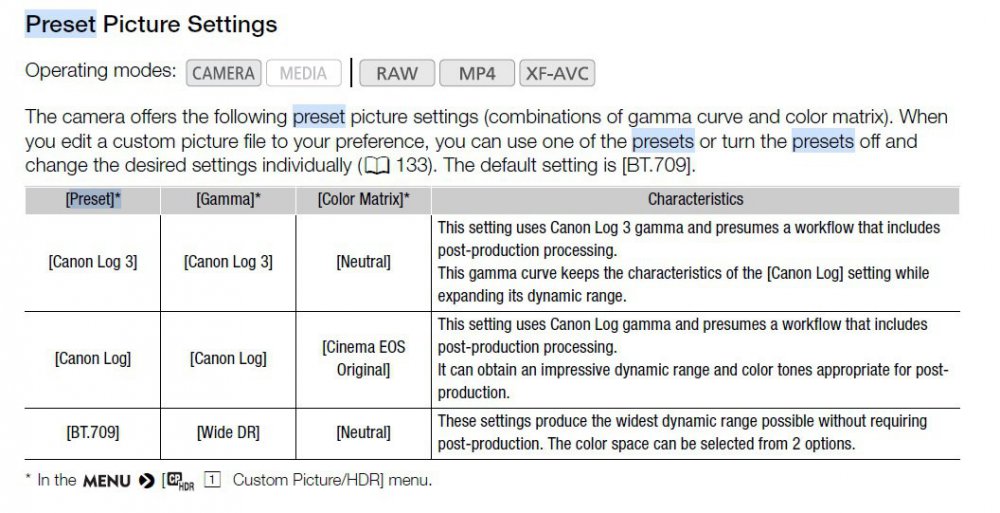-
Posts
628 -
Joined
-
Last visited
About OliKMIA

Recent Profile Visitors
5,197 profile views
OliKMIA's Achievements

Frequent member (4/5)
574
Reputation
-
 Emanuel reacted to a post in a topic:
Isn't all this gear whining pointless? Just go out and shoot...
Emanuel reacted to a post in a topic:
Isn't all this gear whining pointless? Just go out and shoot...
-
Interesting, it says "But JIP is not a large pocket investor, it's a small (US$150m) equity investment partner. In particular, they specialize in what they call "curve out" projects." Which reinforce the felling that Olympus didn't have much options. I'm not sure about the nature of the sale but this division seems to be worth very little which might explain why other imaging companies didn't rush to purchase it. Purchase what? A dying entity without much IP, market share or ground breaking technology? Plus, most imaging companies are also struggling with down-scaling and shrinking market volume. They won't spend cash they don't have for assets they don't need. In the end, I agree that JIP is just a vulture company run by pure financials that will strip the little of bit of profitable meat left of this division and milk it in the shameless possible way. Of course all that will be throught the usual PR bulsshit vocabularly of "opimization, agility, reborned phoenix, strong leadership vision, etc." What else could they do? The camera market is dead. The CIPA numbers are insane.
-
 andrgl reacted to a post in a topic:
Olympus sells Imaging Business
andrgl reacted to a post in a topic:
Olympus sells Imaging Business
-
Very sad, I really loves Olympus lenses. Such great optics. As for the sales and business side, it must be a nightmare to manage that sort of company when your market has been shrinking by 10% per year for so long. It's interesting to compare how Kodak and Fuji managed a similar market crash 20 years ago. I wrote a detailed piece on this: https://petapixel.com/2018/10/19/why-kodak-died-and-fujifilm-thrived-a-tale-of-two-film-companies/ (respectfully, feel fee to remove this link, I don't want to spam) I'm afraid they Olympus sold to who ever they could under the pressure of the shareholders. And now, who's next? Can the pro and prosumer market sustains all the current camera manufacturers? Canon, Sony, and Pana can rely on their other business divisions but companies like Nikon are very isolated and photo-centered.
-
My bad, I wanted to say display, not sensor! Obviously there is no optical link between the EVF display and the sensor so sun frying your EVF is not going to impact your sensor.
-
Ok, so I did some digging in my canon resources. First I need to correct the IRE values I gave you earlier. Here is the exposure for 18% grey recommended by Canon, these values are indicated in this great paper for the C300mk2 but I saw similar values for the C200: C-log 1 = 34% IRE C-log 2 = 39% IRE C-log 3 = 34% IRE I think C-log 2 is only available by default when shooting Canon raw with the C200 but there is no C-log 2 for 8 bits recording on the C200 which makes sense considering how "aggressive" c-log 2 is. Personally, I have no shame to revert to non log curve on some cameras because shooting with aggressive log curve on many 8 bits cameras is a non-sense (eg. S-log 3 on sony, D-log on earlier 60mpbs 4k DJI drone, etc.). I see too many people selecting C-log no matter what because it's "Pro" or "better"... This is plain stupidity if you can't nail the exposure (eg. uncontrolled environment outside) or don't have advanced grading skills. Don't forget that you can apply LUT directly to the LCD screen if you prefer to expose "visually" as judging exposure on the screen in Log can be tricky and it might be the reason why you underexposed in the first place. Indeed, on the screen, Log footage looks brighter which is why you should stick to a reference (grey card and IRE value, X value for certain type of skin-tone, or ballpark estimate on the EV indicator). Also, as far as the colors and look goes, check the "Color Matrix" in the Custom picture/HDR menu (where you set the gamma). Here you must understand how it works with the C200. There are basically 2 options to select the gamma curve: #1. Select one of the presets (Off, BT.709 (WDR), C-log, C-log 3), here the gamma curve and associated color matrix are grey out and they are locked inside the preset with these settings (screenshots from the C200 user manual) #2. Leave preset OFF, then the gamma and color matrix are not grey out and you can choose the combination you want. Notice from the table above how C-log 3 uses the neutral color matrix whereas C-log 1 uses the "Cinema EOS Original" which is a color profile designed to match colors across the EOS camera board (eg. C100, C300, etc.). You may want to play with that if you are not satisfied with the color and overall rendering. Finally, you can also tune the colors in the "other settings" option in the CP/HDR menu. Cheers
-
I'm talking about the C200 here and I'm not sure about the C100mk1. Just check the user manual and official canon resources. The recommended "native" ISO values are there. Get the info from the source, not just a bunch of nobodies on forums (including me!). In one of the Canon papers they also show the distribution of DR in highlights and shadows based on the ISO. Basically, my understanding is that lower than native ISO will give you less noise but also less DR. More than the difference between ISO 800 and 400 in log 2, I don't shoot in log low light. I stick to WDR for that (which again, is not a log curve). Log 1 is also acceptable as it was designed for 8 bits capture. Usually, low light situation doesn't come with the need for great DR capture. Just my 2 cents.
-
Not sure about the C100mk2 but lower ISO should give you less noise in general (at the expense of DR). Also, optimal ISO for C-log 1 is 400. So: ISO 400 for C-log 1 and WDR ISO 800 for C-log 3 I'm not sure about the ISO for C-log 2 but I would say it's 800 (to be confirmed)
-
Hard to tell without getting access to the files but it looks underexposed from what I can see. I also noticed from personal experience that the 34% IRE exposure on 18% grey (value recommended by Canon for C-log and C-log 2) always looks underexposed to me and I tend to expose at around 40% in general. Black balance could also be an option, it doesn't hurt to try. Log curves are made to preserve DR and for advanced grading, not for low light situation. Also, I believe that C-log 3 was originally introduced on the C300 mk2 for the 10 bits mode so it might not be the best option for the C200 in 8 bits. Have you tried shooting in C-log 1? You should get less DR but cleaner shadows as this curve was designed for 8 bits. It's normal to get less noise in WDR mode, technically this is not a log curve but an in between profile with BT.709 shadows and highlight protection from LOG. I think the recommended ISO for WDR is 400 but ISO160 will give you the best result on the shadows. Finally, you should cover the EVF with the provided cap or strong sun exposition could damage the sensor.
-
Of course google tries to monetize its content, they bought Youtube for a reason and integration among platforms is natural. Same thing when FB purchased and ruined IG. That being said, there are plenty of other search engines out there even though Google is the dominant player. Which brings us to the definition of all these major silicon valley companies who became so powerful that regular market rules are irrelevant for them in the sense of free and fair competition. They are in a "winner take all" industry. Since the Federal government doesn't seem very active on the matter, many states are looking into the issue and there might be some answers: https://www.cnbc.com/2020/06/05/states-lean-toward-pushing-to-break-up-googles-ad-tech-business.html same thing for FB https://www.cbsnews.com/news/facebook-under-antitrust-investigation-by-47-states-as-zuckerberg-prepares-to-face-congress/ Wait and see.
-

Shutterstock is ripping off all contributors
OliKMIA replied to Dimitris Stasinos's topic in Cameras
They are just screwing their contributors, like they did many times in the past without any consequence. Their portfolio is soaring. Why would they stop milking the digital slaves? Between Q1 2019 and Q1 2020: "Image collection expanded 27% to approximately 330 million images." "Video collection expanded 29% to approximately 18 million clips." 30% portfolio increase in a year! It's going to take more than a few grumpy folks on forums and quickly forgotten headlines to change their policy. As long as shareholders are happy, it's all good. After the 2020 Q1 release, the CFO explains that "we expect to produce significant earnings and free cash flow in 2020, allowing us to continue paying a quarterly dividend and reinvesting in our business." So most likely, the precious shareholders position is secured, perhaps with the shares taken from the contributors to offset the effects of the Covid-19. And by the way, this company is financially healthy. They have a good amount of cash and no debt "We are well positioned financially with $296 million in cash and no debt" according to their CFO. As mentioned before, net income alone is not a good way to assess a company situation. Their EBITDA is solid and increasing over the years, especially considering that they have no debt (the I part of EBITDA). The ratio are not amazing but not bad. See their annual reports. There is no surge in operating expenses over the year despite massive portfolio increase which clearly contradicts the possibility of booming hosting and content review cost. The 2019 report says " Depreciation and amortization expense increased by $4.7 million as compared to 2018, to $40.4 million in 2019, driven primarily by the depreciation of our capitalized internal-use software. We expect that our cost of revenue will increase in absolute dollars in the foreseeable future to the extent our revenue grows". In other word, hosting fee is no hurting the EBITDA. Which explains why Shutterstock never tried to seriously limit or remove unsold assets as they don't represent a big cost. -
 OliKMIA reacted to a post in a topic:
1D X III vs EOS R5 and R6
OliKMIA reacted to a post in a topic:
1D X III vs EOS R5 and R6
-
Have you tried hyperlapse? 😅
-
 OliKMIA reacted to a post in a topic:
Is DJI now doomed in the US?
OliKMIA reacted to a post in a topic:
Is DJI now doomed in the US?
-
"The Autel patent in question was actually from Canadians at a company called Dragonfly." The company is actually called Draganfly, not Dragonfly... The patent was granted in 2016 to this company before moving to Autel in 2017 and back to Draganfly last year. "Autel just bought it, they did NOT innovate anything. Most of what these Chinese companies do is based on western tech that has been bought or stolen." Obviously, the Patent agreement between Autel and Draganfly directly contradicts your statement... They didn't stole anything, they licensed it. Plus DJI created their own market, there was no one before DJI. How do you steal a tech in a market that doesn't exist? What consumer drone did you use before DJI? "Western companies don't compete in these consumer sectors because of production costs, no other reason." This is just a statement not backed by fact. You probably missed it but plenty of western companies successfully compete in consumer electronic market and are doing quite well with their production costs: all the Japanese camera manufacturers, smartphones makers like Apply and Samsung, TV, appliances, etc. "The suggestion that "innovation" is slipping from the Western hemisphere is total nonsense. It is not." I don't know if innovation in general is "slipping" from developed countries. All I'm saying is that in many industries, Chinese are as good if not better than modern nations (batteries, solar panels, 5G, etc.). The drone business is one of them where they simply beat Parrot, 3DR, and GoPro to name a few. They did everything right on the technological and marketing standpoint. "Stuff may be MADE in developing countries, but the technology underlying it is almost completely sourced from Europe and North America." Depends which industries, but overall, China is becoming more and more self-sufficient. And again, you are contradicting yourself. For the drone market what underlying technology would DJI have source or acquired from Europe and NA? There was no consumer drones before them beside shitty toys made by Parrot. The central element of modern drone is the flight controller. The CEO of DJI (Frank Wang Tao) started his company in Hong Kong in 2006 by designing and providing flight controllers to industrial drone makers. The reason of the consumer drone boom at this time was directly related to the ability to source cheap acelerometers and IMU sensors that were mass produced for the Nintendo Wii and the first Iphone. Flight controllers are critical to make unstable drones stay in the air as the machine must receive precise attitude data from the IMU and ACC sensors. That what separates RC product from drones. Colin Guinn approached DJI to distribute their flight controllers in the US before relation turned sour. If anything, as I mentioned earlier, DJI got inspired by Parrot but they did a much better job than the french drone makers. Copying their bad products would have been a waste of time. They turned a toy business into a mass photo/video market and got inspired by Apple on the marketing side with sleek product that work out of the box. Once again, and like with the Canon 24p thing, you know very little about this industry and your blatant lack of basic understanding of the situation is embarrassing. Repeating imaginary things over and over in bold and capital letters won't help to turn your fairy tales into realities. I'm done wasting my time with your nonsense.
-
The Skydio is actually very cool. I friend of mine who is part of the beta testing team told me good stuff about the flight model and obstacle avoidance system. It seems very impressive but IQ is average according to him (I haven't checked directly). That being said: - The Skydio targets a small part of the market which is smart (useless to go head on against DJI). I don't think they will really threat DJI. - History shows that DJI quickly tries to kill the competition by releasing product with similar or better features. For instance, the auto flight mode on the Mavic Air 2 is improved but not up to the Skydio level. But what about the next generation of Mavic? If the Skydio slightly threaten DJI monopoly, they will unleash their R&D power to silence the competition... - They seem to have issue to scale production, last time I checked, it was not available yet and market introduction outside USA is unknown. But I really wish the best to the Skydio team as we need more competition against DJI.
-
In some sectors, Chinese are just closing the gap and sometime, even beating western companies. Drone is one of these sector. Innovation and production cost are two different things. Plenty of consumer product companies do innovate and place their production line in low cost countries. DJI are just the best at what they do. They did it first and much better than the competition. Initially the French company Parrot had an edge in he drone consumer market but their product were cheaply made. DJI moved up market and proposed higher end drone (Phantom) able to carry a GoPro, then a gimbal (zenmuse), then they integrated the gimbal and camera on the drone with a nice ready to fly package (Phantom 3). Meanwhile Parrot proposed the piece of crap Bebop which was just an horrible product (I know, I was one of the product ambassador). The Parrot Anafi was better but by that time, DJI became a giant and it was impossible to close the technological gap. Therefore Parrot left the drone consumer market. The same thing happened with American 3DR: they just designed bad drones (IRIS, Solo, etc.) which were under-powered or poorly tuned. The 3DR production line in Mexico didn't help with cost neither. GoPro also made the same mistake with the Karma, it took them years to develop, they wanted to do everything in house and meet the market with a drone that was already obsolete by the time it was release. I approached them for technological consulting but they knew better than the rest of the world at the time... GoPro tried to compete with the Phantom when DJI released the Mavic 1. Guess what? The Mavic 1 was sold out for months while the Karmas were crashing out of the sky due to the battery fiasco. GoPro quickly quit this market with massive financial loss. And unlike the camera or phone industry, DJI didn't copy or catch up with anybody, they create their own market with technological and commercial innovation. They came up with ready to fly bundle in what was a DIY industry. They made everything nice and simple by innovation, improving existing solution (e.g. the controller and tablet integration introduced by parrot with the horrible and massive skycontroller). They didn't fear to cannibalize their on product line and they sunk the competition with extremely fast product cycle (sometime less than a year between each release). I now believe that DJI is unbeatable due to its commercial and technological advance. At least on the short-medium term. I've been working in the drone industry since the early 2010s and no one comes close to DJI. I've seen countless drone start up crash. Even Autel is just catching up with DJI and their technology is way behind DJI. They obviously don't master the stabilization issue. DJI R&D department is probably as big as the entire Autel company. DJI is also the only drone company with a good digital link. Autel radio range don't even come close and they would have to spend millions in R&D to reach that level. A few years ago, a drone company in Asia tried to develop an Ocusync alternative but they quickly abandon due to the cost: R&D alone was in millions, then came MOQ (minimum order quantity) from supplier which were also very large to be competitive. So no, innovation is what made DJI. Western companies just performed poorly and they lost. It has nothing to do with production cost. As for the industrial/military market, this is a completely different world. Industrial drone is a niche market which is being tackled by DJI, and they are pushing more and more in this direction because the consumer market is becoming saturated. Incoming regulation are not going to help neither. As for the military, many countries will just exclude a Chinese provider.
-
 OliKMIA reacted to a post in a topic:
Best aerial footage
OliKMIA reacted to a post in a topic:
Best aerial footage
-
Thanks for the kind words mate. @Trek of Joy Beautiful video of Kimberley. The grading is amazing!
-
 OliKMIA reacted to a post in a topic:
Best aerial footage
OliKMIA reacted to a post in a topic:
Best aerial footage
-
The legal situation is not very clear at the moment and I don't how it is going to impact DJI. It is effective immediately? Can DJI appeal the decision? So far this seems to be a recommendation only. That being said: 1. DJI was in the same situation many years ago when the relation with their local USA agent (Colin Guinn) turned sour. A decision prevented DJI to sale drones in the USA. The situation was quickly resolved via and out of court settlement (DJI wrote a big check to Colin) and they resumed operation in a matter of days. Colin left to 3DR that wen belly-up before going back to Texas to support its own drone software company. 2. Most likely, Autel is just trying to get a big check from DJI as well. I don't think Autel is strong enough to go head on against a company which is probably 10 or 100 times bigger. Plus Autel has always been very "influenced" by DJI designed (Phantom vs Xstar) and DJI may also start an IP / Patent / copyright war against Autel. 3. However, with the ongoing US-China trade war, thing might turn ugly for DJI if this case becomes political. But Autel is also a Chinese company. I'll wait for further details about the legal situation .








